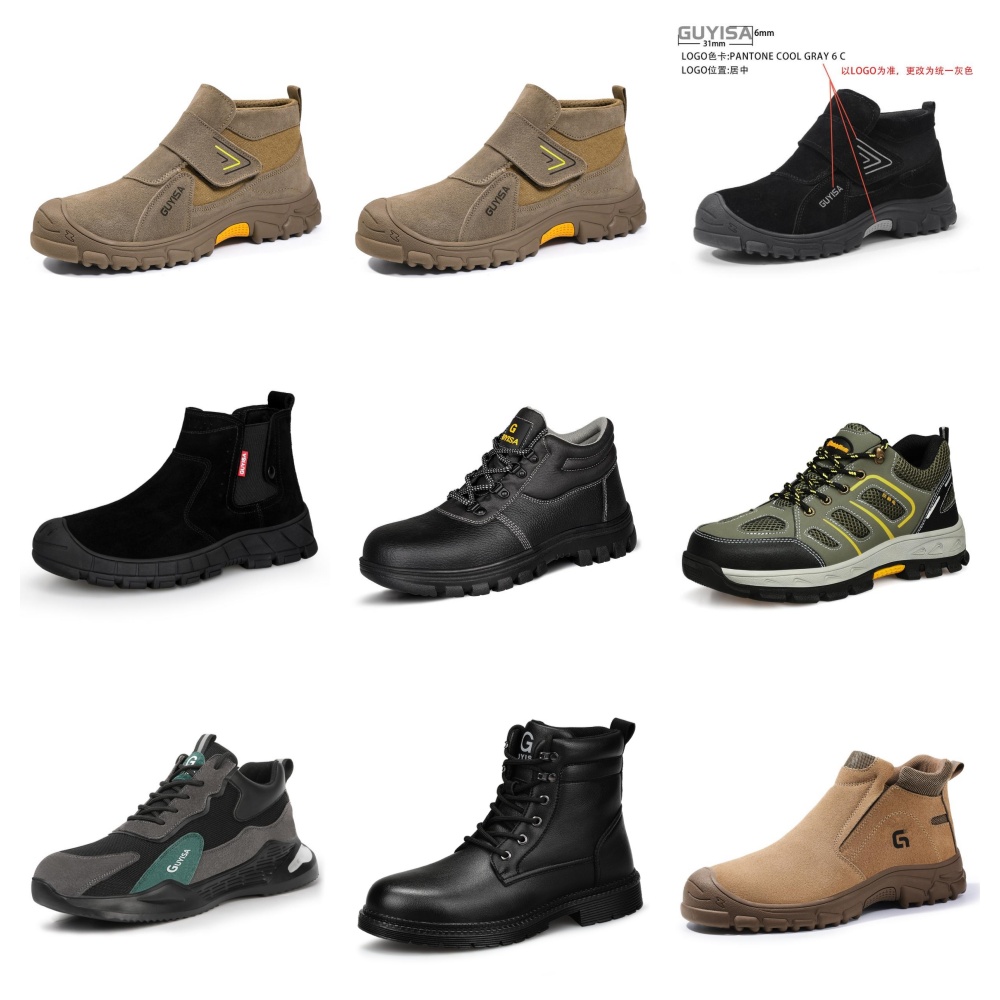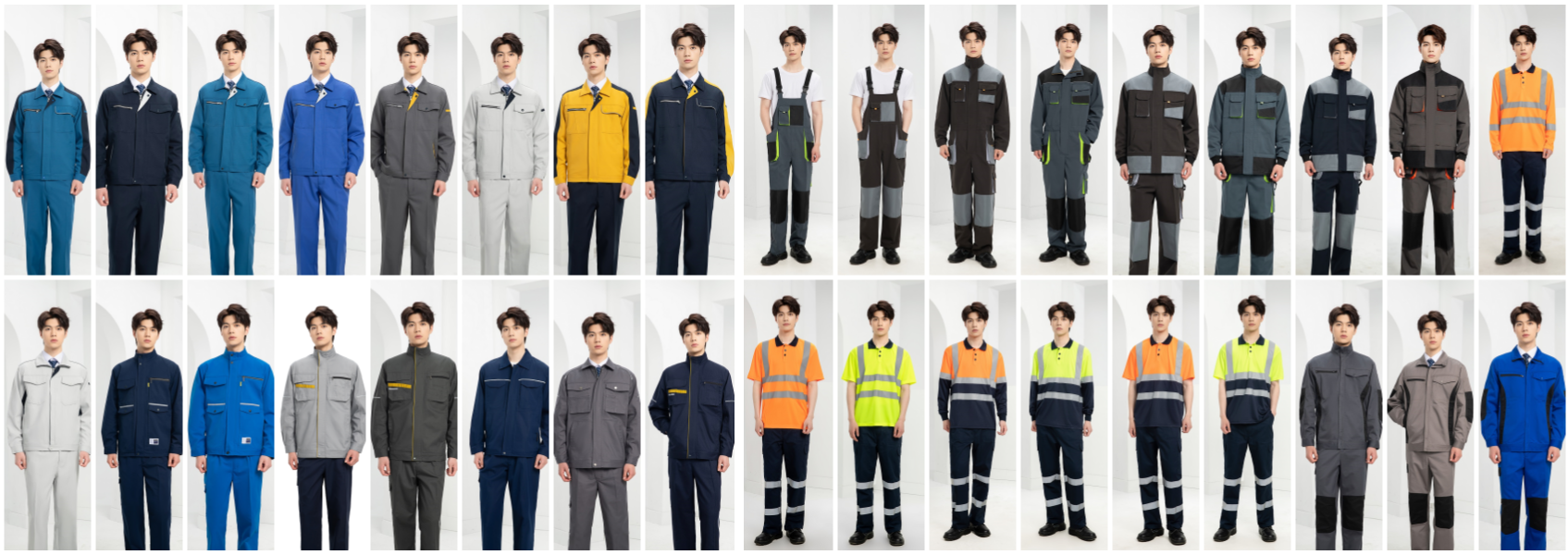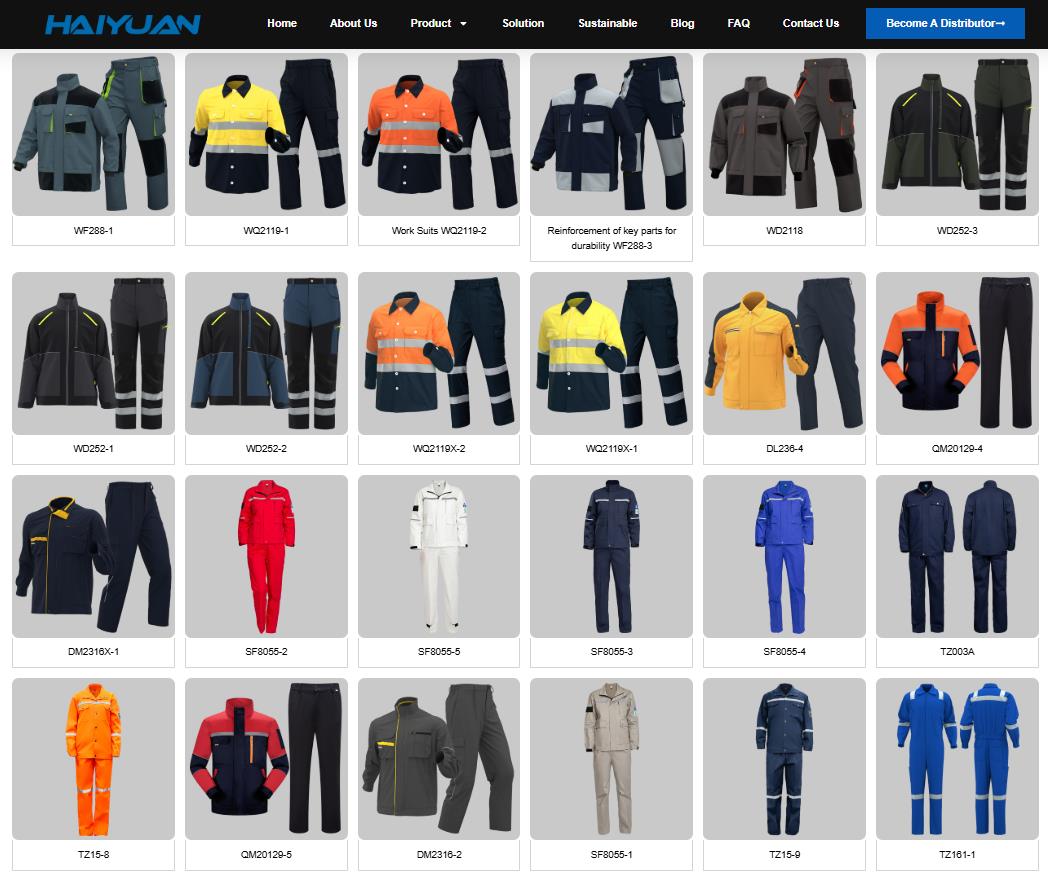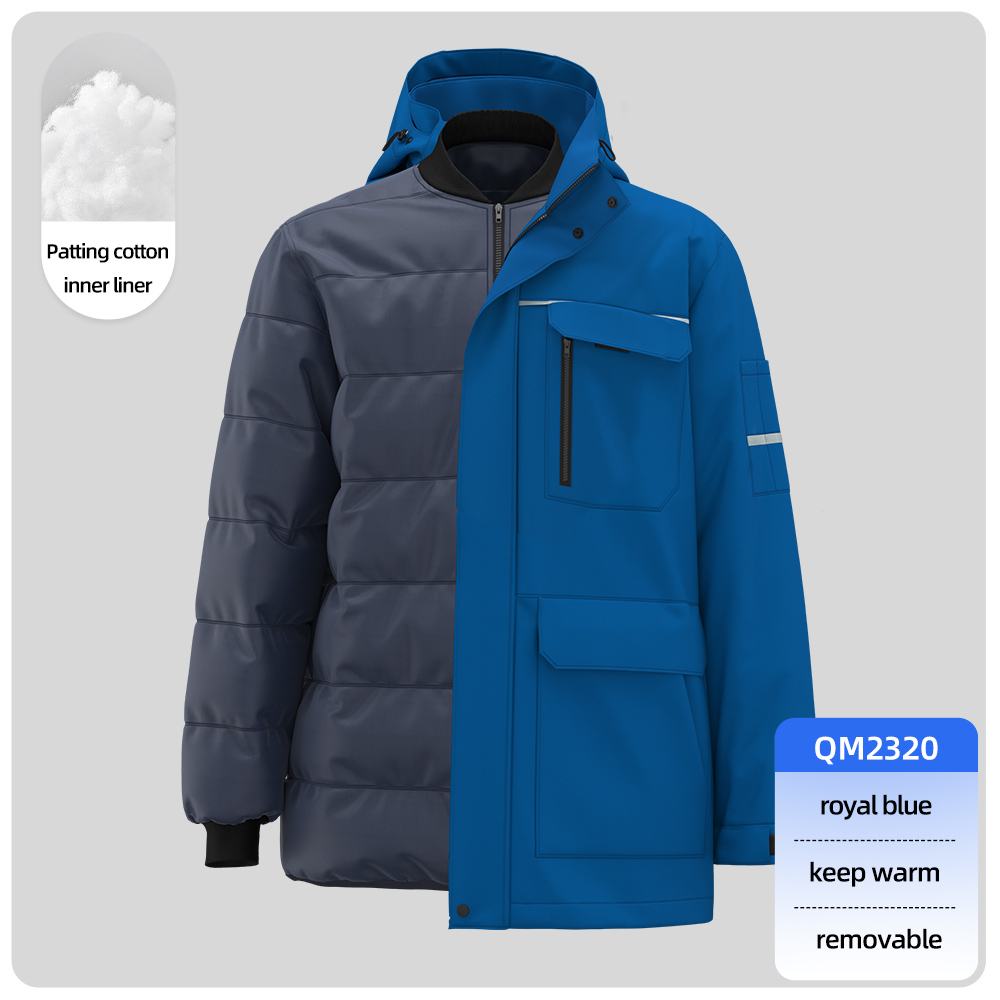“Common work clothes” vary dramatically based on the job, but they can be grouped into categories based on the industry and required level of safety and professionalism.
Here is a breakdown of common work clothes for different sectors:
1. The Universal Basics
Nearly every manual job requires these foundational items:
-
Durable Pants: Made from thick cotton or synthetic blends (like ripstop or canvas). Cargo pants with multiple pockets are extremely popular for their utility.
-
Sturdy Shirt: A durable t-shirt, polo shirt, or long-sleeved button-down shirt, often in dark colors to hide stains.
-
Safety Footwear: Steel-toed or composite-toe boots are essential in most industrial, construction, and warehouse settings. They protect feet from heavy objects and often have slip-resistant soles.

safety footwear
2. Trades & Manual Labor (e.g., Construction, Plumbing, Electrical)
This category prioritizes durability and safety.
-
Clothing:
-
Work Pants: Heavy-duty cargo pants (like those from Carhartt or Dickies) or denim jeans.
-
Shirts: Long-sleeved henleys or button-ups made of durable fabric to protect from abrasions.
-
Outerwear: Insulated jackets and waterproof coats.
-
Overalls / Coveralls: For full-body protection against dirt, grease, and insulation.
-
-
Protective Gear (PPE):
-
High-Visibility (Hi-Vis) Vest: Mandatory on job sites with vehicle traffic.
-
Hard Hat: Essential on construction sites.
-
Work Gloves: Leather for construction, insulated for electrical work, or rubber for plumbing.
-
Safety Glasses/Goggles: To protect from flying debris or chemicals.
-
Knee Pads: For trades like flooring or plumbing.

polyester cotton labor workwear
-
3. Industrial & Manufacturing (e.g., Factory, Plant Workers)
Similar to trades, but often with stricter, company-wide uniform standards.
-
Clothing:
-
Company-Issued Uniforms: Often provided by the employer. This could be a set of durable shirts and pants, sometimes from brands like Red Kap or Aramark.
-
Flame-Resistant (FR) Clothing: Mandatory in oil & gas, utilities, or chemical plants where there is a risk of arc flash or fire. This includes FR shirts, pants, and coveralls.
-
-
Protective Gear (PPE):
-
Hard Hat, Safety Glasses, and Steel-Toed Boots are typically required at all times.
-
Hearing Protection (earplugs or muffs) for loud machinery.
-
Respirators where air quality is a concern.
-
4. Service & Technical Fields (e.g., HVAC Technicians, Auto Mechanics)
This blend requires a professional appearance with practical durability.
-
Clothing:
-
Uniform: A company-branded polo shirt or button-down, paired with durable pants (often dark-colored to hide grime).
-
Footwear: Steel-toed shoes or sturdy boots.
-
-
Protective Gear:
-
Mechanics: Heavy-duty, grease-resistant gloves.
-
HVAC Technicians: Gloves for handling sharp metal and insulation.
-
5. Hospitality, Retail & Office Environments
This category focuses on a neat and professional appearance, often described as “business casual” or a uniform.
-
Common Attire:
-
Office Workers: Dress pants, button-down shirts, blouses, blazers, skirts, and dress shoes.
-
Retail/Hospitality: A company-provided polo shirt or button-down, paired with khakis or black dress pants. Non-slip shoes are common for restaurant and hotel staff.
-
6. Healthcare & Laboratories
Priority is on hygiene, cleanliness, and functionality.
-
Common Attire:
-
Scrubs: The standard uniform for nurses, doctors, and veterinary staff. They are easy to clean and allow for movement.
-
Lab Coats: Worn by doctors, scientists, and pharmacists over their regular clothes for protection.
-
Footwear: Comfortable, supportive, and easy-to-clean closed-toe shoes (e.g., clogs or athletic shoes).
-
Summary Table
| Industry | Common Clothing | Key Features & PPE |
|---|---|---|
| Trades & Construction | Heavy-duty pants, work shirts, coveralls | Durability, Pockets. Hi-Vis vest, hard hat, gloves, safety glasses, steel-toed boots. |
| Industrial & Manufacturing | Company uniforms, Flame-Resistant (FR) clothing | Safety Compliance. Hard hat, safety glasses, hearing protection, steel-toed boots. |
| Service Technicians | Branded polo/shirt, durable dark pants | Professional Image + Utility. Knee pads, specialized gloves. |
| Healthcare & Labs | Scrubs, Lab Coats | Hygiene, Comfort. Disposable gloves, face masks, comfortable shoes. |
| Hospitality & Office | Business casual, branded polos, khakis | Professional Appearance. Neat, clean, and presentable. |
In short, the most common work clothes are defined by their function. They are designed to protect the worker, provide utility (like pockets), withstand wear and tear, and project the right image for the job.





